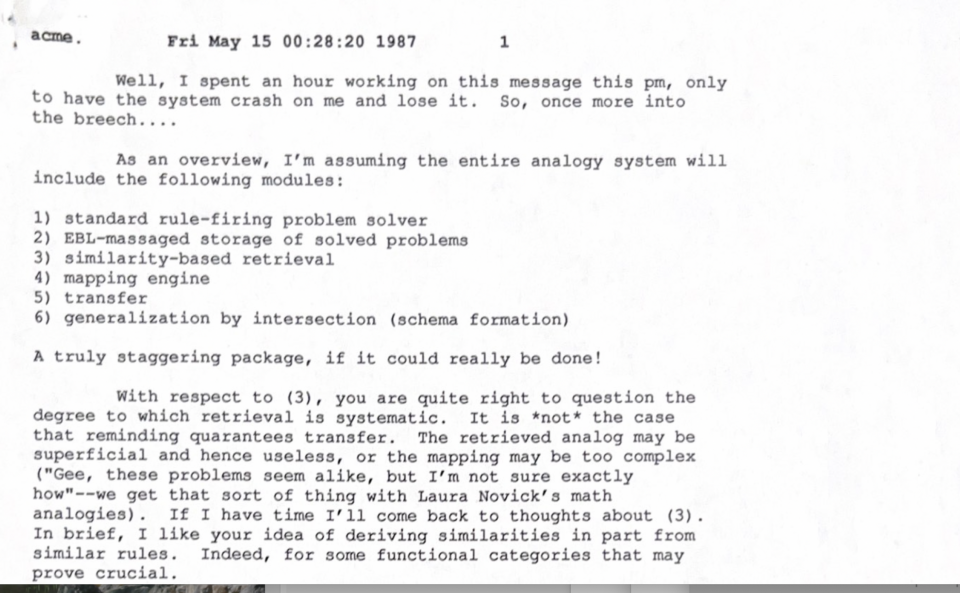click here to download document

Background
The Analogical Constraint Mapping Engine (ACME) model of analogical mapping1 was itself the product of an analogy. In this case the source analog was a connectionist model of a perceptual phenomenon, the ambiguous Necker cube.2 The origin of ACME is therefore itself a case study illustrating how analogy can generate new ideas. Here is a copy of emails that Keith Holyoak wrote to Paul Thagard in May 1987, providing the first sketch of the ACME model, and also a related model of analog retrieval, Analog Retrieval by Constraint Satisfaction3 (ARCS; here called ARM, for Analog Retrieval Model).
- Holyoak, K. J., & Thagard, P. (1989). Analogical mapping by constraint satisfaction. Cognitive Science, 13, 295-355.
- Rumelhart, D. E., Smolensky, P., McClelland, J. L., & Hinton, G. E. (1986). Schemata and sequential thought processes in PDP models. In J. L. McClelland, D. E. Rumelhart, & the PDP Research Group (1986). Parallel distributed processing: Explorations in the microstructure of cognition: Vol. 2, Psychological and biological models (pp. 7-57). Cambridge, MA: MIT Press.
- Thagard, P., Holyoak, K. J., Nelson, G., & Gochfeld, D. (1990). Analog retrieval by constraint satisfaction. Artificial Intelligence, 46, 259-310.